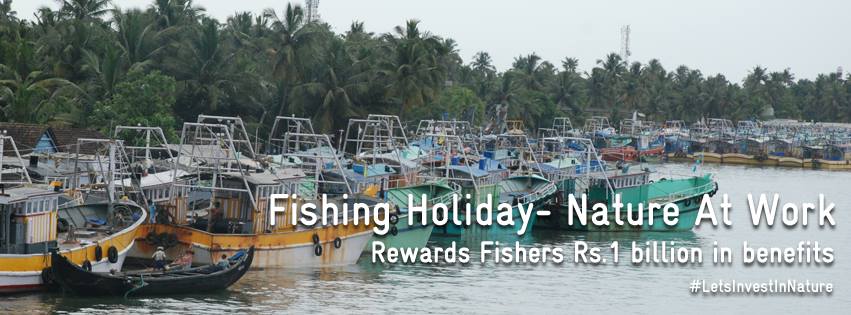Shubhangi Singh: “The world has enough for everyone’s needs, but not everyone’s greed” – these words spoken by Mahatma Gandhi could not ring more true is this age of rampant consumption.
India has a vast coastline, and hence, it also supports a thriving fisheries sectors of it’s own. Although available in abundance, this renewable source of food can collapse rapidly due to unchecked mechanised fishing that can catch massive numbers of fishes– even the young ones. What would happen if a resource, however abundant, is continually consumed? Wouldn’t it cease to exist at some stage?
In recent years, large-scale commercial fishing involving trawlers and indiscriminate fishing practices has led to an increase in netting juvenile fishes as well as other marine species that are unintentional or that yield low revenue for the fishermen. Since the fishes aren’t given a chance to renew their numbers, there have been cases of severe decline in the fish population. This collapse would not only mean a drop in the economy for the fishing sector, but it also threatens to strike at the tightly knit ecosystem in the affected region. To remedy this problem, India has been implementing the Seasonal Fishing Ban since the late 1980s. The fishing ban spans for about 45-60 days, i.e. between June 15th till July31 in the West Coast of India and from April 15th until about May 31st in the Eastern Coast of the country. The annual ban is not applicable to traditional fishermen who go on voyage in the territorial waters in their catamarans and non-motorised vessels causing minimal damage. Instead, the ban is intended to curb large-scale fishing that hampers the replenishing of the fish population around their breeding season. In 2014, Researchers studied the impact of such bans in five coastal states, and their findings, are truly astounding. The bans have resulted in a growth of the fish mass where the estimated economic value (based on landing price) of the incremental growth of fish attained due to a fishing ban of 45-60 days was over a billion rupees in the five states. Although one can argue that there are certain costs attached to implementing and enforcing this ban that is to be considered in order to evaluate the true reflected profits; in this case, it is easy to review the economic and environment benefits to realise how the ban definitely emerges a winner in this bargain.
Millions of fishers along India’s vast coastline eke out a living, contribute to national development and are learning to cope with conservation of marine resources. Along with the experts, the fishermen themselves have come to see the importance of sustainable fishing and, hence, work towards implementing the seasonal ban in order to reap better (and longer) occupational profits gained from this enforced holiday. The fishing ban not only helps revive the fisheries, it also looks out for the fishermen’s lives by restricting them from travelling too deep during monsoons when the sea is rough. This ban combined with other management measures, such as— an ecosystem-based approach, marine protected areas, no-take zones, certification, mesh size regulation and minimum legal size at capture— can help revive the decline this, otherwise, renewable resource has been facing.
The seasonal fishing holiday provides the fish stock a much needed time to revive itself and effectively bounce back. And with the benefits known to outweigh the costs of this ban, the seasonal fishing holiday might be an answer to long term ways to support this flourishing sector of ours. So, to make the fishing sector more sustainable, it is, certainly, worth strengthening the Seasonal Fishing Ban.

